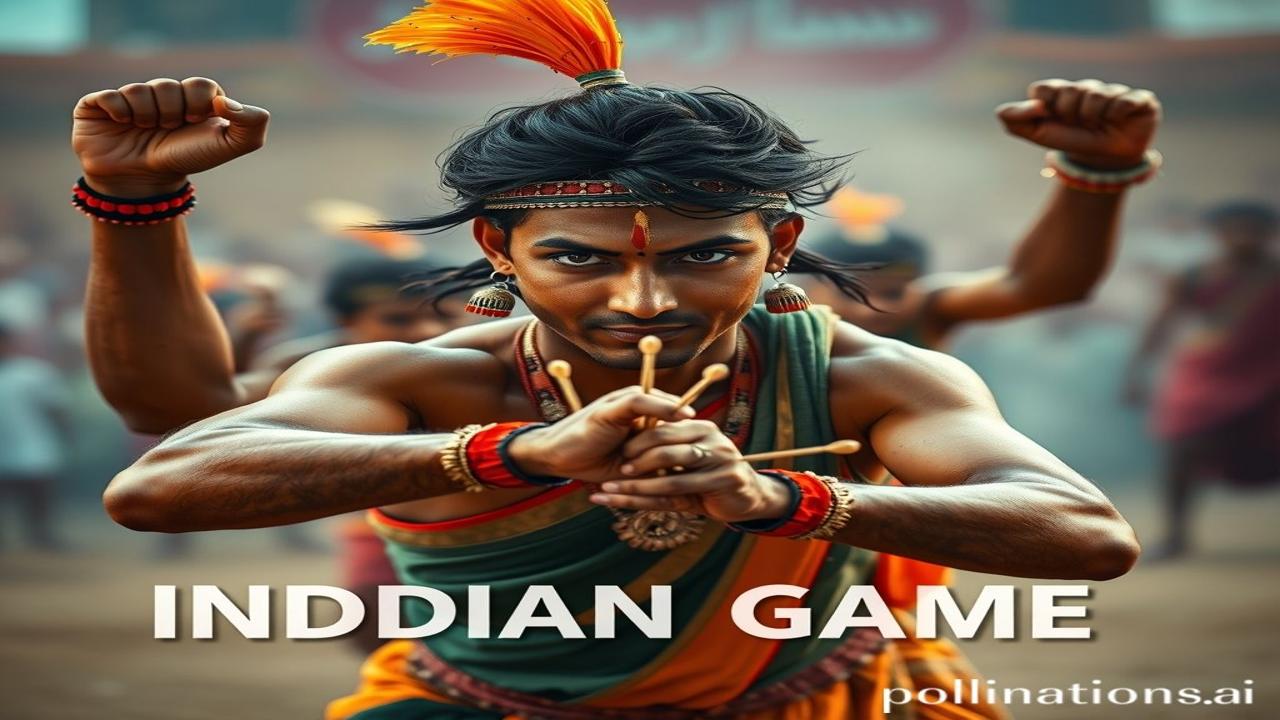Dhool Bhari Galiyan, Chhupi Hui Kahaaniyan: Rediscovering India’s Ancient Fitness Secrets
Kabhi socha hai, jab smartphones nahi the, gyms nahi the, tab Bharat ke log fit kaise rehte the? Waqt ki dhool mein kuch aisi kahaniyan chhupi hain jo sirf mazedaar nahi, balki hamari sehat ke liye bhi ek treasure trove hain! Let’s rediscover the magic of traditional Indian games – a fun and engaging way to unlock physical fitness, Indian style!
Traditional Indian Games: A Heritage of Health & Fun
What is this? Traditional Indian games, or desi games, are more than just pastimes; they’re a vibrant part of our cultural heritage. These games, passed down through generations, are a holistic approach to physical activity, combining fun, strategy, and community engagement.
When and Where Did It Happen? From the Indus Valley Civilization (yes, as far back as that!) to the courts of Mughal emperors, games have always been an integral part of Indian life. Each region developed its unique set of games, reflecting its geography, culture, and societal values. Think about Gilli Danda from the North, Kabaddi from across the country, Kho-Kho known in Maharashtra, and Lagori again very pan-Indian.
Why is it important in our history or culture? These games were not just about fitness; they were about community building, strategic thinking, and preserving our culture. They were the OG form of exercise – no fancy equipment required! They instilled values like teamwork, discipline, and resilience in the young. Plus, they were incredibly affordable and accessible to everyone, regardless of their socio-economic background.
Zameeni Sach: A Day in the Life… The Khel-Kood Edition!
Imagine, a small village in Rajasthan. Dhool udti hui galiyan. The sun is setting, painting the sky in hues of orange and pink. A group of children, their faces smeared with dust and laughter, gather around a makeshift Gilli Danda setup.
“Arey Pappu, zara dekh ke maarna! Varna teri bari jayegi!” shouts one boy, his eyes sparkling with mischief.
Another child, proudly holding the gilli, responds, “Dekhta hai, dekhhta hai! Aaj toh chhakka marunga!”
Meanwhile, in a bustling courtyard in ancient Patliputra (modern-day Patna), young princes and princesses are engaged in a spirited game of Pachisi (ancestor of Ludo). Ma Rukmini, observing from a distance, smiles at their enthusiasm. She knows that these games are not just fun, but also a way to sharpen their minds and prepare them for the challenges of leadership.
“Yeh khel dimaag aur sharir dono ko tezz karta hai,” she muses to herself, adjusting her silk sari.
Dharohar aur Pehchan: Desi Games in Modern India
Today, as we grapple with sedentary lifestyles and a growing disconnect from our roots, the revival of traditional Indian games is more relevant than ever. We see glimpses of it in:
- School Programs: Some schools are integrating Kabaddi and Kho-Kho into their physical education curriculum.
- Rural Sports Festivals: Rural India still keeps the spirit of these games alive.
- Cultural Events: Events that showcase India’s rich cultural heritage often feature traditional games.
Reclaiming these games is not just about fitness; it’s about reconnecting with our Bharatiyata. It’s about embracing our identity and passing on these invaluable traditions to future generations. It’s about reviving the joy of playing together, without the need for screens or expensive equipment.
Mazedaar Tathya ya Bhram-Bhanjak: Did You Know This?
Log samajhte hain ki Kabaddi sirf gaon ka khel hai…lekin asli sach yeh hai ki yeh ek Olympic sport bhi hai! Kabaddi was a demonstration sport at the 1936 Berlin Olympics and has since gained international recognition. It’s a testament to the power and enduring appeal of this ancient Indian game.
Ek aur myth: These games are only for kids. Wrong! Adults can benefit immensely from the physical and mental challenges they offer. It’s a great way to stay active and connect with your inner child.
Drishya aur Bhavnayein: The Senses Come Alive
Imagine the smell of the earth after a light drizzle, the sound of children’s laughter echoing through the streets, the feel of the cool breeze on your skin as you run after the gilli. The colours of the vibrant clothes worn during a Kabaddi match, the taste of homemade nimbu pani after a long, energetic game. Traditional Indian games are not just about movement; they’re about a complete sensory experience.
Antim Vichar ya Uddharan: A Call to Play
“Khelna kudna hai sehat ke liye vardaan,
Bhule bisre khelo ko phir se do pehchan.”
Let’s rediscover the joy and fitness benefits of traditional Indian games. Let’s make them a part of our daily lives, and let’s pass them on to the next generation. After all, what better way to celebrate our heritage than by playing our way to a healthier, happier, and more connected India?
